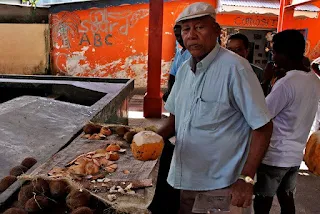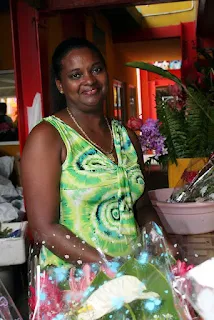Speaking Creole on the African Island Seychelles
During the colonial era in Seychelles, the dominant language used by colonizers was French. Slaves who were brought to Seychelles had their own unique African languages, such as Makhuwa, Malagasy, Tsonga, Swahili, Sukuma, Chaga, Sena, Kikuyu, Luo, Kamba, Maasai, and Shona. They were exposed to the French language used for authority, commerce, and daily life within the colonial context. As a result, the Seychellois pidgin creole language evolved over time, incorporating elements from French and African native languages.
AExplore More Diaspora Connections:
Creole Connection Hub →Evolution of Seychellois Creole Language
Seychelles, located in the Indian Ocean, was uninhabited until the French established a settlement in 1770. The first recorded sighting of the Seychelles islands was by the French explorer Lazare Picault in 1742. In 1756, the French formally claimed Seychelles, naming them after Jean Moreau de Séchelles, the finance minister under King Louis XV.
The islands became a French colony, with the French East India Company taking control. British Occupation from 1794-1810, during the Napoleonic Wars 1803–1815, the British seized control of Seychelles in 1794. Seychelles served as a crucial stopover for British ships traveling between the Cape of Good Hope and British-controlled India.
The Treaty of Paris, signed on May 30, 1814, marked the end of the Napoleonic Wars and brought about significant changes in the political landscape of Europe. One of the outcomes of this treaty was that Seychelles was formally ceded to Britain. Seychelles remained a British colony for over 160 years until it gained independence on June 29, 1976.
The influence of French colonizers on the language of slaves in Seychelles is evident in the development of Seychellois Creole, also known as Kreol or Seselwa. Seychellois Creole is a distinct language that emerged due to the linguistic interaction between French colonizers and African slaves brought to the islands.
Throughout the colonial era, the French and African slaves had frequent interactions that played a crucial role in the genesis and evolution of the unique Creole language spoken in Seychelles today. This language, known as Seychellois Creole, Seselwa, or Kreol, is a fascinating amalgamation of French, African languages, and other cultural influences.
French was the dominant language of the colonial administration and the European settlers in Seychelles. Slaves from Mozambique, Madagascar, Tanzania, Kenya, and East African regions were exposed to French as the language of authority, commerce, and daily life within the colonial context.
Communication between individuals with different native languages led to developing a pidgin language. A pidgin is a simplified form of a language that arises for communication between groups with no common language. Over time, this pidgin evolved into a creole as it became the primary means of communication among the diverse population in Seychelles.
Seychellois Creole language is characterized by an intricate system of grammar, unique pronunciation, and a rich lexicon that reflects the diverse origins of its vocabulary. This Creole language has become an essential part of the cultural identity of Seychelles history and heritage.
The Seychelles, being a French and later British colony, served as a strategic stopover point for ships involved in the slave trade. The slaves brought to Seychelles were forced into labor on plantations and cultivated coconut palms, vanilla, cinnamon trees, sugar cane, and food crops such as pineapples, avocados, cassava, and yams on the islands.
Many slaves came from Mozambique, Madagascar, Tanzania, Kenya, and East Africa. The East African coast was actively involved in both the transatlantic and Indian Ocean slave trades, but mainly the Indian Ocean slave trade routes. Arab, Portuguese, and later European traders were involved in this trade. Seychelles' proximity to Mozambique made it a strategic location for the transportation of slaves.
Did you know?
Haitian Creole and Seychellois Creole have common French-derived roots. However, Haitian Creole and Seychellois Creole will find it challenging to understand each other because the two creoles have developed unique vocabularies over time, sounds, or accentuations unique to each creole. Haitian Creole and Seychellois Creole share a common linguistic origin in French but have evolved differently because of the influence of different African languages. French was used by colonizers, and slaves who were brought to Seychelles spoke unique African languages, evolving the Seychellois pidgin creole language.





